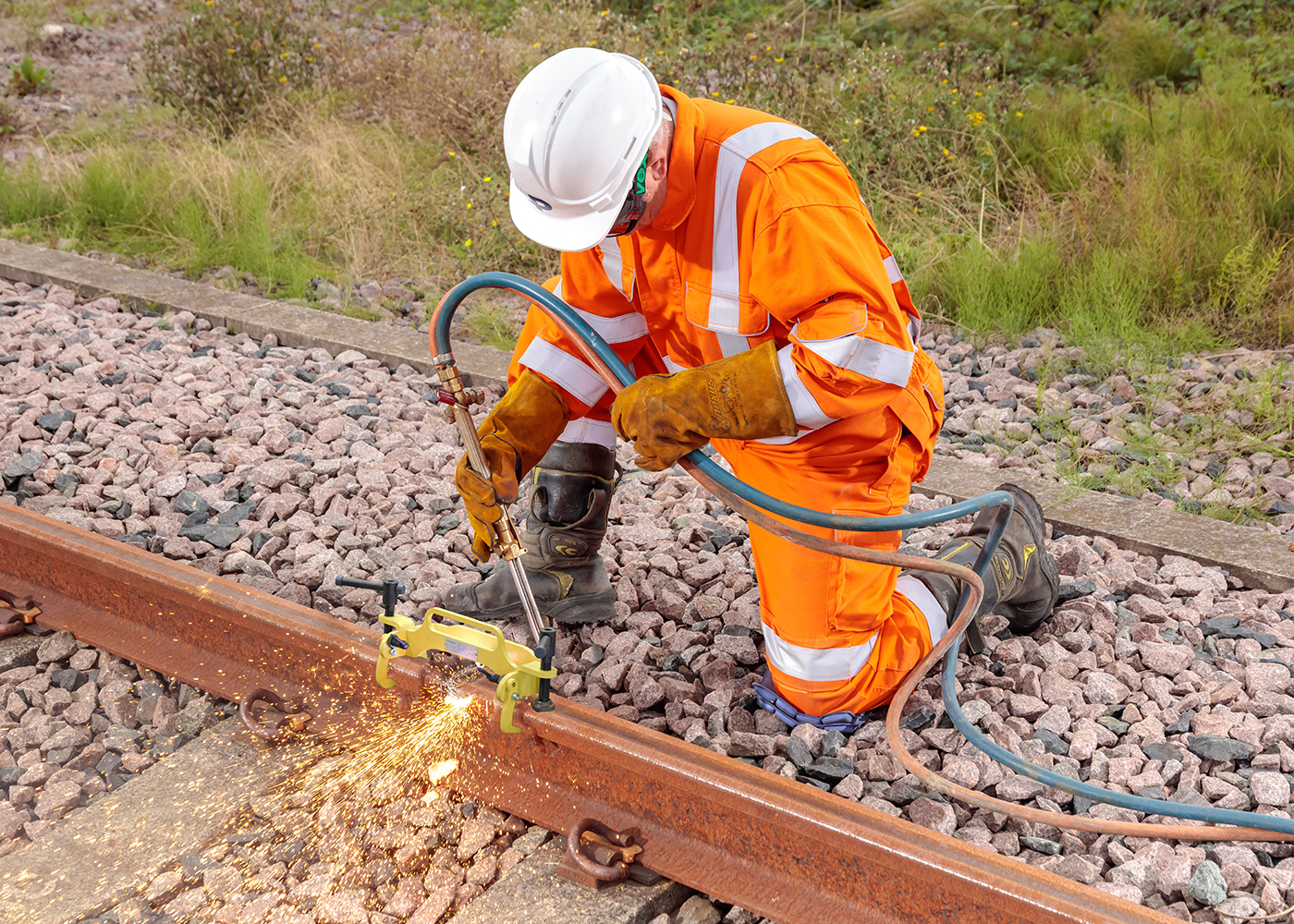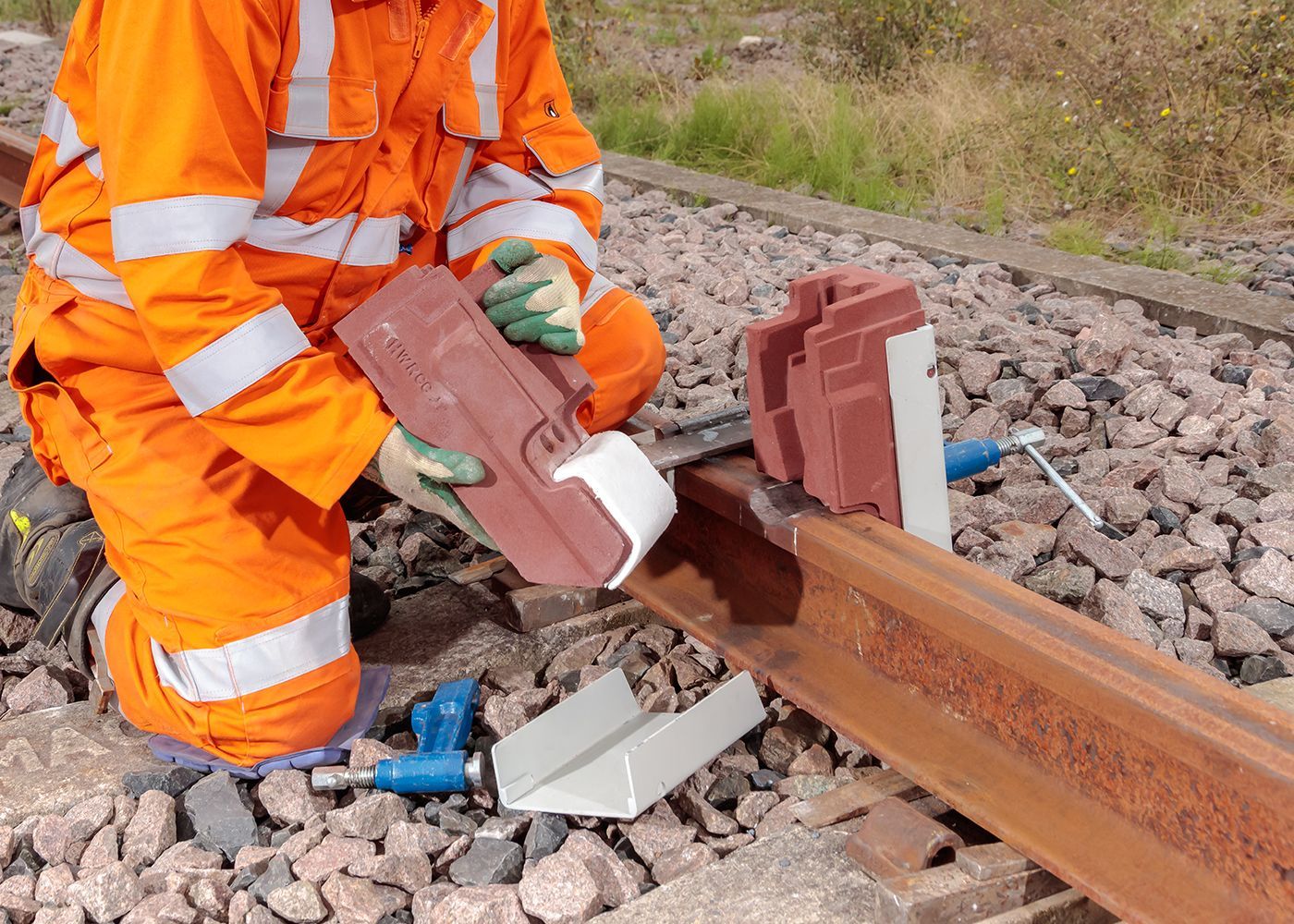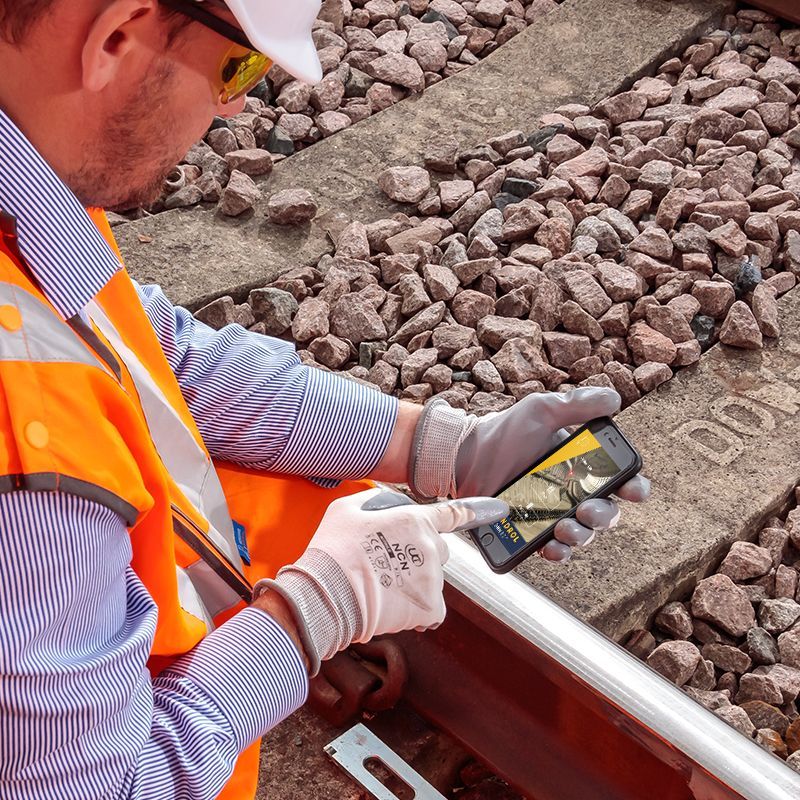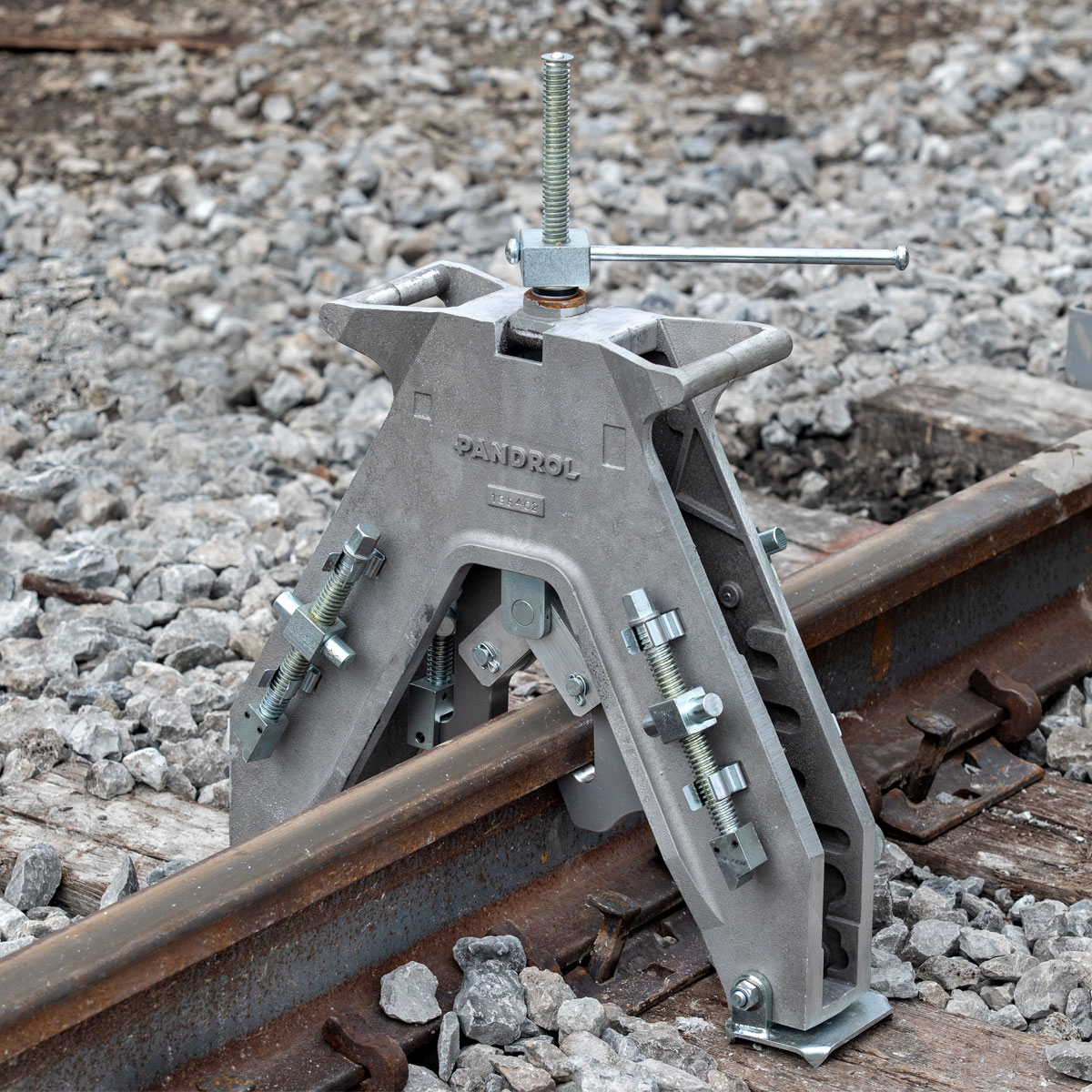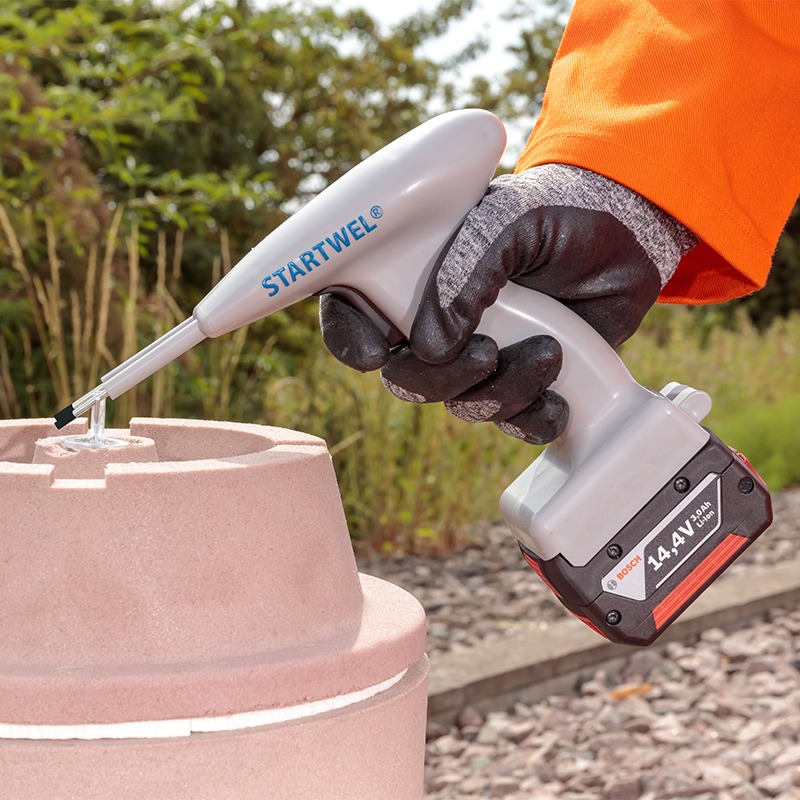Head Wash Repair Welding Process
Pandrol’s head wash repair (HWR) process provides a cost-effective and efficient alternative to plug rail repairs. Suitable for repairing railhead defects between 25 – 90 mm wide and 25mm deep (depending on the rail profile), it can be used on both the parent rail and on electric flash butt welds, which often suffer from squats. It is also suitable for transversal defects, shelling and corner gauge.
The aluminothermic weld process is carried out using specially designed moulds. After unmoulding, the weld is trimmed and ground in accordance with the network specifications. The HWR process complies with the requirements of all modern railway networks.
Downloads
Technical Features
- The defect in the rail can be removed through either oxy-propane cutting or grinding, with the HWR weld then replacing the empty slot. The fusion area width is about 120 mm with the oxy-propane cutting method and 80 mm with grinding. The fusion depth reaches 30 mm below the slot, ensuring total removal of the defect
- Using the HWR process, the region of highest tensile stress is in the radius under the railhead. The felt of HWR avoids flashing in this critical location and greatly strengthens fatigue resistance
- Standard hardware including Pandrol’s One-Shot Crucible is used. The specially designed moulds are based on products that welding crews are already familiar with
- The HWR process can be used to repair squats, transversal defects, shelling and corner gauge; defects between 25 mm and 90 mm wide and 25 mm deep; and on the parent rail and electric flash butt welds
Advantages
- The head wash repair process is simple and efficient. Where plug rail repairs involve replacing the rail section and doing two new welds which can take up to four hours, HWR requires no rail destressing and only involves one weld that can be done in approximately one hour, providing significant cost and time savings
- The HWR process is very safe, using the same welding parameters and hardware as Pandrol’s other welding processes
- No extra investment is required in training or hardware, as the HWR process uses standard hardware and the One-Shot Crucible. The familiar mould design enables the welding crew to do the repair weld quickly and easily
- HWR is available for all rail grades and complies with the requirements of modern railway networks
Crucible
-
![CJ2]()
CJ2
A larger crucible capable of performing Standard Gap and Wide Gap welds thanks to the larger portion size. It can also be provided with an Eco-filter which reduces the emissions of smoke and dust, which is useful in tunnels and underground
Moulds
-
![HWR moulds]()
HWR moulds
These patented mould use a felt layer between the rail and mould, and a step which ensures the perfect adjustment of the mold on the rolling surface, both on worn and new rails
Head Wash Repair Welding Process
Trainers
-
![Nicolas Chevalier]()
Nicolas Chevalier
Nicolas has been in the railway industry for 25 years, with 15 years at SNCF (including 6 years at their national training centre) and 10 years at Pandrol working his way from a Technical Assistant to the Director of Pandrol’s Training Academy

